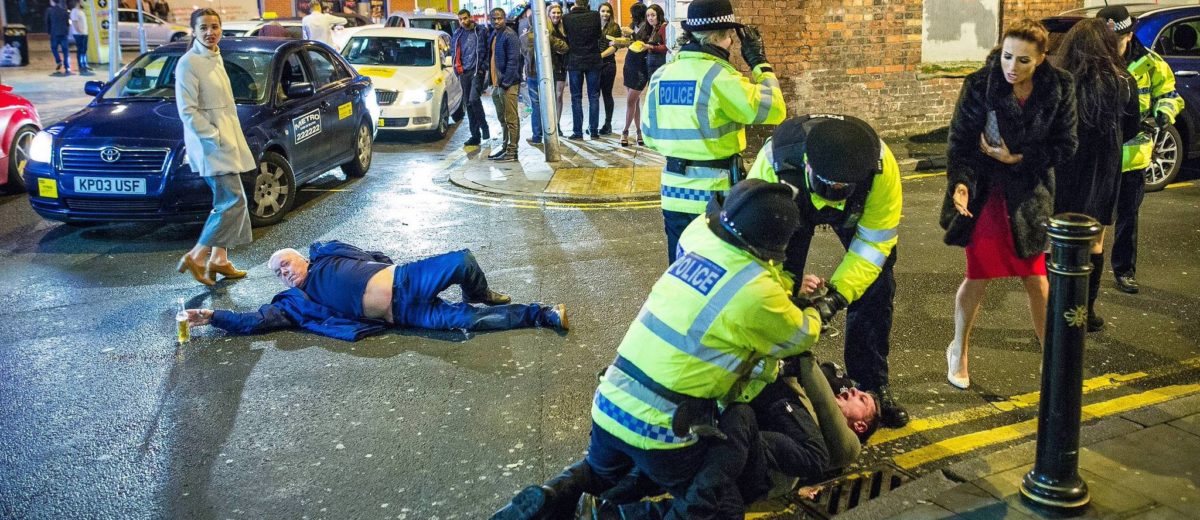Andy Crouch captured the mood with this tweet on Tuesday: We are tired. We are tired of slipping. Of sliding. We are tired of corduroy. [Except me. I’m not hating on the cords – just trying to fit in here – gimme a break.] Otherwise, it’s been a really quite week. Not one brewery has … Continue reading “Your Mid-March Beer News For The Winter That Won’t Go Away”
What can we say about 2017? Not as many celebrity rock star deaths as in 2016, I suppose. And we are not yet into the Putin war years. So, all in all a year to look back upon fondly. It is the time of triumphalist beer pronouncements, whether by blogger or brewer, at bit at … Continue reading “Thursday Beer Links For Year’s End, Hogmanay and New Year’s Eve 2017”
Nosing around the Met‘s digitized collection a bit more, I came across “The Harvesters” by Pieter Bruegel the Elder from 1565. Not hard as it was on the front page. I have posted a few times about paintings by his son, the imaginatively named Pieter Bruegel the Younger, over the years but this one struck me … Continue reading “Beer and Art: The Harvesters, Pieter Bruegel the Elder, 1565”
S “Samuel Allsopp & Sons” at pages 712-713 says: “In 1807 Samuel Allsopp bought out the Wilsons and turned Samuel Allsopp & Sons into a public company.” Allsopp’s did not become a public company until its flotation in 1887. In addition, Samuel Allsopp only had one son in 1807, and he was aged two. It … Continue reading “Articles – S”
O “oast house” at page 621 states: “Oast houses, or ‘hop kilns’ as they are also known …” To be more specific, the buildings for drying hops seem to have been called oast houses (from a mostly Southern English dialect word meaning “kiln”) in Kent and Sussex, but hop kilns in Surrey, the West Midlands … Continue reading “Articles – O”
K “Kent, England,” in this entry it states “At its height in the 1870s, hop cultivation claimed more than 31,000 ha (77,000 acres) of the county.” According to “Hops” by AH Burgess of Wye College “English hop acreage reached its peak of 71,789 acres in 1878”. “Kent Golding (hop)” at page 513 states: “The Golding … Continue reading “Articles – K”
I “immigration (effects on brewing)”states on page 476 “The ancient Celts brought brewing to the British Isles when they fled the European continent ahead of advancing tribes in the 5th century AD.” This is completely wrong. Evidence for brewing in Britain dates back to the Neolithic, at least 4000 BC. The Celts arrived in Britain … Continue reading “Articles – I”
H “Hansen, Emil Christian” lager yeast has been re-named again and is now Saccharomyces pastorianus. “Harvest” this entry says simply “See BARLEY HARVEST”. Shouldn’t there also be an entry for HOP HARVEST? “Harwood, Ralph” entry at page 422 states:”A popular drink at the time was “three threads”, a dark beer mixture drawn from three different … Continue reading “Articles – H”
G “George Gale & Co Ltd” entry at page 385 states: ” George Gale & Co Ltd was once the most significant ale brewer in the county of Hampshire …” It was not. Gale’s was considerably smaller than a number of important brewers in Hampshire, including Brickwood’s of Portsmouth (closed 1983) and Strong’s of Romsey … Continue reading “Articles – G”
B “Ballantine IPA” entry at page 80 states “…brewed from 1890 into the 1990’s by the Ballantine Brewing Co.”. While most 19th Century ads for the brews from the Ballantine ale brewery usually just mentioned “Ales and Porter” without specifying the various types of ales they brewed, there are newspaper articles and local ads from … Continue reading “Articles – B”
